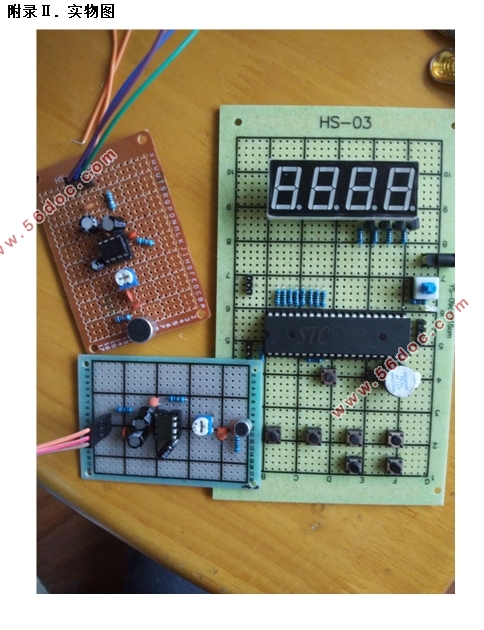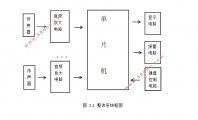噪声测量电路的设计
来源:56doc.com 资料编号:5D26699 资料等级:★★★★★ %E8%B5%84%E6%96%99%E7%BC%96%E5%8F%B7%EF%BC%9A5D26699
资料以网页介绍的为准,下载后不会有水印.资料仅供学习参考之用. 密 保 惠 帮助
资料介绍
噪声测量电路的设计(开题报告,论文11400字)
摘 要
随着社会的发展,生活水平的提高,噪声污染问题愈加严重。人们越来越重视对周边环境噪声的实时检测。噪声的实时监测,对人民改善生活环境,提高生活质量来说显得尤为重要。
本文首先对噪声测量技术的背景、意义、研究重点、研究状况进行了介绍;并介绍了本课题所用的基于单片机的噪声测量电路的原理以及系统组成。本设计大体可分为数据采集和数据处理两大块,其中数据采集部分包含了声音采集电路、放大电路、模数转换电路三个模块,数据处理部分包含了单片机处理单元、数码管显示电路以及蜂鸣器报警电路三个模块。传声器采集声音信号,将其转换成较弱电压信号并经过放大器放大,然后AD转换器将模拟电信号转换成数字量传入单片机进行数据处理,从而用数码管显示噪声值。噪声污染不仅影响人们的正常生活,更有甚者会对人们的身体健康产生不利影响。因此让居民随时查看周边噪声情况以便采取相应措施尤为重要。
关键词:运算放大器 单片机 数码管 噪声
Design of noise measurement circuitmodelling
Abstract
With the social development, the harm of the noise becomes more and more important, People pay more and more attention to the real-time detection of environmental noise. Environmental noise monitoring is an important link to improve the quality of life and enhance the environmental protection.
Firstly, this paper introduces the background, significance, research focus and research situation of noise measurement technology. Also the principle and system composition of noise measurement circuit are introduced in this paper,includes noise signal acquisition, amplification, AD conversion, data processing and design of display system and alarm system.The external sound signal is converted into voltage signal by the microphone,electrical signal after amplification and AD conversion input to the MCU processing,And converted into the corresponding noise DB value through the digital tube display, so as to achieve the measurement of noise. The harm of noise is not only reflected in the impact on the normal life, but also harm to people's health. So it is very important to take the corresponding measures to allow residents to view the surrounding noise at any time.
Key Words: Operational amplifier,Noise,Single Chip Micoyo,LED



目 录
摘 要 I
Abstract II
第一章 绪论 1
1.1 课题背景和研究意义 1
1.2 有关噪声的基础知识 2
1.3 噪声检测研究的现状及发展 3
1.4噪声测量电路的基本原理 4
1.5设计要求 4
第二章 硬件电路设计 5
2.1 设计思路 5
2.2 单元电路设计 6
2.2.1传声器 6
2.2.2 音频放大电路 7
2.2.3 单片机 9
2.2.4显示电路 11
2.2.5报警电路 13
2.2.6 键盘控制电路 14
第三章 软件设计及仿真 15
3.1 软件设计 15
3.1.1 软件设计总体框图 15
3.1.2 AD转换及滤波子函数 16
3.1.3 显示子函数 18
3.2 仿真 19
3.2.1 仿真环境介绍 19
3.2.2 总体仿真 19
第四章 调试及结果分析 22
4.1 调试步骤 22
4.2 调试结果 22
4.3 结果分析 24
4.4 遇到的问题 25
参考文献 26
致谢 28
附录Ⅰ. 部分程序 28
附录Ⅱ. 实物图 32
|







